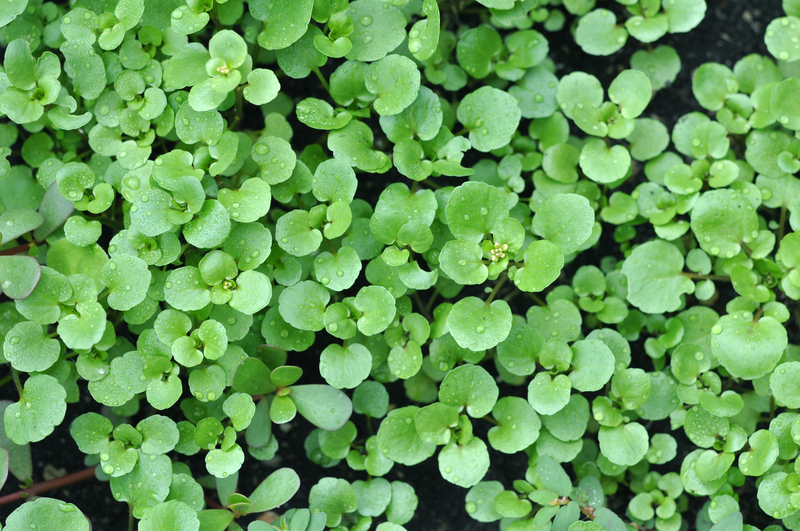How Your Garden Could Combat Climate Woes
Posted on 26/08/2025
How Your Garden Could Combat Climate Woes: A Comprehensive Guide
Did you know that your home garden could be one of the most powerful tools in the fight against climate change? Whether you have a sprawling yard or a modest balcony, every green patch has the potential to make a real difference. This article explores how your garden can combat climate woes, highlighting actionable steps, environmental benefits, and the science behind it all.
Why Gardens Matter in the Climate Crisis
Climate change is an ever-growing concern and the effects are widely visible, from more severe storms to rising temperatures and changing rainfall patterns. While government policies and industry regulations are essential, grassroots efforts like carbon-conscious gardening can play a critical role. Your backyard, window planter, or even urban rooftop could help absorb carbon, cool cities, and boost biodiversity.
The Surprising Potential of Your Backyard
Many people underestimate the environmental impact of personal gardens. However, gardens collectively cover more land globally than the entire country of France. Imagine if every one of these spaces adopted eco-friendly gardening practices! These micro-habitats can:
- Encourage carbon sequestration and reduce atmospheric carbon dioxide
- Alleviate urban heat, creating natural climate buffers
- Boost resilience against floods and droughts
- Support and nurture essential pollinators

How Your Garden Can Help Combat Climate Change
Below, we uncover the top strategies for making your garden a climate ally:
1. Carbon Sequestration: Turning Soil into a Carbon Sink
One of the remarkable features of gardening is its ability to trap and store carbon dioxide from the atmosphere--a process known as carbon sequestration. Plants absorb CO2 during photosynthesis, storing carbon in their leaves, stems, roots, and in the soil.
Tips to Maximize Carbon Sequestration:- Plant more perennials: Trees, shrubs, and perennial flowers hold onto carbon for years (or even decades), while annuals decompose each season.
- Maintain healthy soil: Avoid excessive tilling, which releases stored carbon. Instead, opt for no-dig gardening and mulching to keep soil structure intact.
- Compost wisely: Composting helps recycle plant material, returning nutrients and improving soil structure, which further enhances carbon storage.
2. Supporting Biodiversity: Strengthening the Local Ecosystem
A biodiverse garden is resilient to climate stress. By cultivating a wide variety of plants, you support pollinators, pest predators, and soil microbes, creating a self-sustaining ecosystem.
How to Enhance Garden Biodiversity:- Plant native species that thrive in your region and require less water
- Install wildflower strips or pollinator gardens
- Provide water sources, such as birdbaths and small ponds
- Leave some leaf litter or logs as habitats for beneficial insects
3. Managing Water Resources
Climate change intensifies droughts and floods, but you can transform your garden into a water-wise haven. Water-smart gardening reduces the demand on municipal water supplies and keeps runoff from polluting streams.
Water-Wise Gardening Strategies:- Harvest rainwater: Install barrels or swales to capture rain for irrigation.
- Mulch generously: Mulching keeps moisture in the soil and cools plant roots.
- Grow drought-tolerant or native plants
- Create permeable surfaces with gravel or stepping-stones to allow rain to seep into the ground.
4. Reducing Urban Heat Islands
In cities, temperatures are frequently several degrees warmer than rural areas--a phenomenon called the urban heat island effect. Gardens act like air conditioners, shading homes and cooling the air through transpiration.
How to Cool with Your Garden:- Plant large trees for shade — they can reduce local temperatures by several degrees
- Add vertical gardens and green roofs in urban environments
- Cover heat-absorbing surfaces, like driveways, with vines or ground cover plants
- Maximize plant diversity to enhance air quality and evaporative cooling
5. Cutting Food Miles: Grow Your Own Edibles
Commercial agriculture and food transport generate significant greenhouse gas emissions. By growing your own fruits, vegetables, and herbs, you lower the carbon footprint of your diet.
Edible Gardening for the Climate:- Start a small vegetable bed or use containers for herbs and leafy greens
- Opt for seasonal crops that thrive in your climate
- Practice companion planting to boost yields and repel pests
- Share surplus with neighbors to strengthen your community food web
Adopting Regenerative Gardening Practices
While any garden can be climate positive, some practices have especially strong impacts. Regenerative gardening aims not just to sustain, but to improve the health of the land.
Key Principles of Regenerative Gardening:
- Build living soil: Feed the beneficial microorganisms that keep your soil healthy
- Keep living roots in the soil year-round with cover crops or perennials
- Minimize synthetic chemical use to preserve the soil food web
- Rotate crops and use polycultures to avoid depleting nutrients
Switching to regenerative methods can not only combat climate woes in your backyard but also enhance your garden's productivity, resilience, and beauty.
The Science: How Gardens Fight Climate Change
Understanding Carbon Storage
Soil is Earth's largest terrestrial carbon store. When you build healthy, organic-rich soil through composting, mulching, and minimizing disturbance, you trap carbon that would otherwise contribute to global warming. Over time, a healthy garden can sequester tons of carbon dioxide!
Albedo Effect
Green plants reflect more sunlight than bare soil or concrete, helping to cool local environments. By increasing greenery, you increase the garden's albedo, reflecting solar energy and decreasing net heating.
Water Retention & Flood Buffering
Well-structured soil with ample organic matter acts as a sponge, soaking up excess rainfall and gradually releasing water during dry spells. This can lessen both drought and flood risk in your local area.Practical Steps to Create a Climate-Smart Garden
- Assess your garden's climate impact.
Audit your space for existing greenery, hard surfaces, and water flow. Identify areas for improvement--like replacing a lawn with drought-resistant plants or adding compost bins. - Choose climate-adapted plants.
Select trees, shrubs, and perennials that thrive in your region. Research the best natives and resilient cultivars for your soil and weather. - Re-think your lawn.
Lawns often require heavy watering and mowing. Consider replacing part of your grass with a wildflower meadow or a veggie patch. - Compost kitchen and yard waste.
Diverting organic waste from landfill reduces methane emissions and builds soil fertility. - Limit pesticides and fertilizers.
Excess chemicals disrupt the soil ecosystem and can lead to greenhouse gas release. - Encourage wildlife.
Install birdhouses, pollinator hotels, and native hedgerows. - Go peat-free when planting.
Peat extraction damages valuable bog habitats — always pick alternative potting mixes.
Garden Design Tips for Maximum Climate Benefits
Create Climate Resilience with Layers
A diverse garden, with multiple layers--from tall trees to low groundcovers--creates habitats, reduces soil erosion, and traps more carbon. Think of your yard as a mini-forest!
Integrate Rain Gardens and Swales
Direct rainwater into planted depressions to filter and slow runoff while nurturing deep-rooted plants. This prevents flash floods and supports thirsty roots in dry times.
Encourage Vertical Greening
Walls, fences, and sheds can all host vertical gardens or climbing plants, adding cooling shade and extra greenery.
Year-Round Cover
Never leave soil bare. Use mulch, cover crops, or groundcovers to shade soil, suppress weeds, and prevent carbon loss.
Real-Life Examples: Climate-Positive Gardens in Action
- Edible Forest Gardens: Homeowners worldwide are recreating the logic of natural forests, layering fruit trees, shrubs, herbs, and vines to yield food and permanent carbon sinks.
- Rainwater Harvesting Oases: Cities like Los Angeles and Melbourne have rolled out incentives for rainwater tanks and swales, turning homes into stormwater-friendly green spaces.
- Community Pollinator Gardens: Urban groups are converting empty lots into vibrant habitats that support bees and butterflies, strengthening food webs and biodiversity.

Common Questions About Climate-Friendly Gardening
Is my small garden too insignificant to matter?
*Absolutely not!* When multiplied by millions of gardeners, small changes have a massive impact. Plus, your garden can inspire neighbors to follow suit.
Can gardens really 'cool' the city?
*Yes!* Studies show that well-planted urban gardens can lower temperatures by 2-5?C, making neighborhoods safer during heatwaves.
What is the best plant to fight climate change?
While trees sequester loads of carbon, the best plant is one that's suited to your conditions, thrives without chemicals, and provides food or habitat!
Take Action: Make Your Garden a Climate Hero Today
By adopting even a few of these climate-smart strategies, your garden can combat climate woes and contribute to a healthier planet. The steps are simple, impactful, and often save money in the long run. Remember, every green leaf matters.
*Will you be part of the solution?*
Further Reading & Resources
- Royal Horticultural Society: Climate and Gardening
- The Nature Conservancy: Regenerative Gardening Explained
- Garden Organic: Sustainable Gardening
Start today and transform your outdoor space into a frontline defense against climate change. A more resilient, beautiful, and sustainable future begins right in your own garden!

